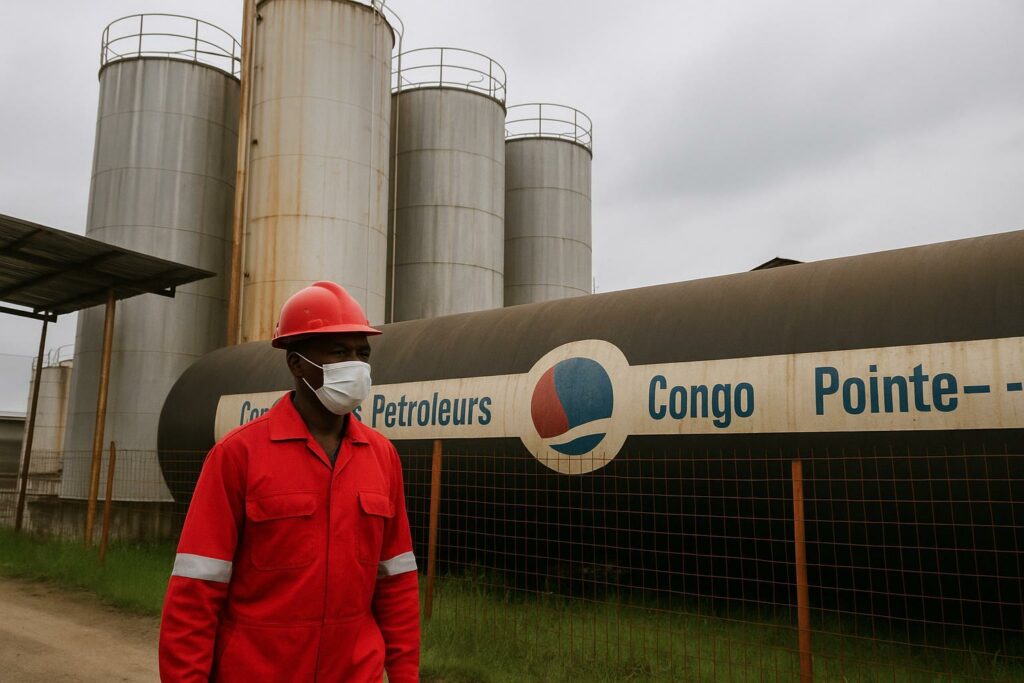Paradox of Abundance in Kouilou District
The southern corridor that runs from Pointe-Noire to the Kouilou lagoon is lined with the sinews of the Congolese hydrocarbons industry: pipelines snake behind mango orchards, a 487-megawatt gas-to-power plant flickers at night, and transmission lines trace the skyline. Yet, in settlements such as Tchicanou and Bondi, the domestic switch remains stubbornly off. Residents like Florent Makosso, sixty-eight, describe the night-time landscape as “permanent twilight,” illumined only by the distant flare that crowns the offshore gas hub.
The contrast captures a wider national dilemma. The Republic of Congo produced an average of 344,000 barrels of crude per day in 2021, ranking third in sub-Saharan Africa, and its proven natural-gas reserves approach 100 billion cubic metres. Nevertheless, grid access hovers below 40 percent in urban districts and dips under 10 percent in rural areas. Development economists often describe the situation as a ‘resource alignment lag’: infrastructure that services export value chains is in place, while the capillary network required for public supply advances more slowly.
Government Roadmap toward 50 Percent Electrification
Mindful of the disparity, the Ministry of Energy and Hydraulics has consolidated a national electrification roadmap that seeks to lift overall access to 50 percent by 2030. In a recent conversation with Les Dépêches de Brazzaville, Minister Emile Ouosso underscored the administration’s commitment to “balanced territorial coverage” and cited budgetary headroom created by 2022 fiscal surpluses—estimated at around CFA 700 billion—as a lever for investment. Preparatory studies focus on extending medium-voltage feeders from the Pointe-Noire grid to coastal villages, supported by concessional finance and public-private partnerships aimed at accelerating last-mile distribution.
Community Expectations and Social Fabric
Local voices, while acknowledging governmental engagement, insist on concrete timelines. “Our televisions have become ornaments,” sighs Flodem Tchicaya of Tchicanou, invoking the cost of diesel generators that many households reluctantly operate a few hours per week. Nearby, Roger Dimina argues that power supply should flow from “the base to the summit,” a metaphor that resonates in communities who watch offshore platforms glow nightly while their own courtyards remain dark. The Commission Justice et Paix, a civil-society structure close to the Catholic Church, has amplified these concerns through its ‘Electricity for All’ campaign, urging operators to channel a portion of the surface royalty directly into rural grid extensions.
À retenir
Hydrocarbon output and gas-to-power capacity give Congo-Brazzaville a theoretical surplus of electrons; the challenge lies in distribution, not generation. The administration’s 2030 target of 50 percent access is financed in part by recent revenue windfalls, while civic actors call for transparent allocation mechanisms. In the Pointe-Noire hinterland, a pilot link between the national transmission spine and village transformers is being envisaged as a proof of concept for broader rollout.
Le point juridique/éco
Article 99 of the Hydrocarbons Code stipulates that operating companies contribute a surface fee intended for local development projects. Legal analysts note that electrification qualifies as an eligible expenditure, provided projects are embedded in a communal development plan validated by the prefecture. On the economic front, universal electricity access is projected to raise household incomes by up to 30 percent within five years, primarily through refrigeration, extended study hours and small-scale agro-processing—all priorities in the National Development Plan 2022-2026.
Strategic Outlook Beyond 2030
The Pointe-Noire experience illustrates how modern infrastructure can coexist with rural darkness—and how that paradox can be resolved. A phased connection schedule, beginning with trunk lines already surveyed, would reinforce the government’s pledge while demonstrating the social dividend of the hydrocarbons sector. At a regional level, improved electrification also strengthens Congo’s position within the Central African Power Pool, enabling cross-border energy trade and grid stability.
For families in Tchicanou, the measure of success will be tangible: a lit classroom after dusk, a freezer that preserves daily catch, a television that is more than decoration. In diplomatic circles, such outcomes will highlight the Republic of Congo’s capacity to convert resource wealth into inclusive growth, an ambition that—judged by current policy signals—remains firmly within reach.

